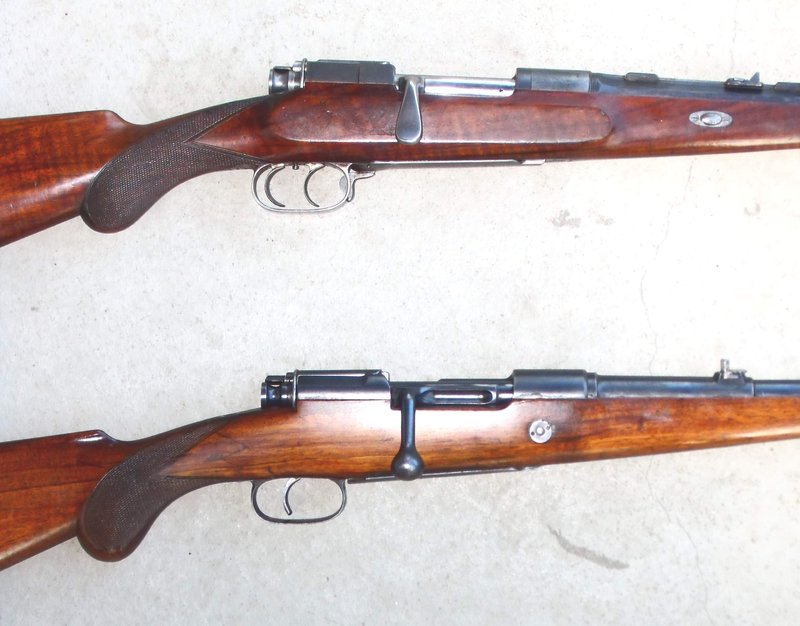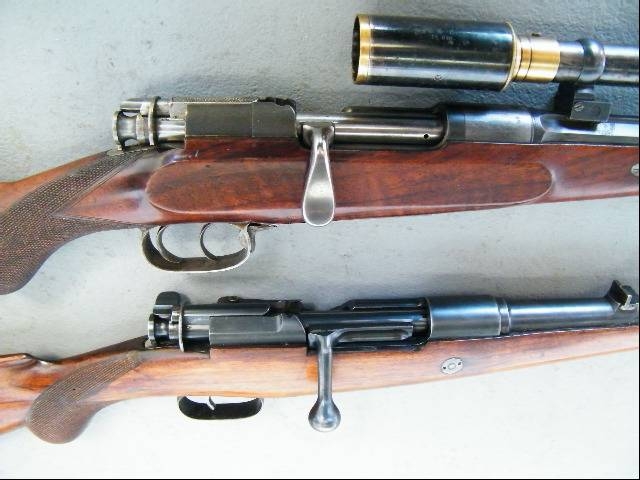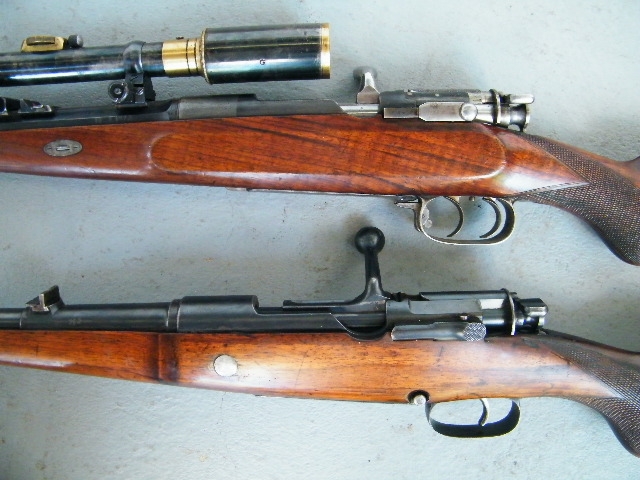| kuduae |
| (.400 member) |
| 26/02/13 06:40 AM |
|
|
In the 1890s the C.G.Haenel Company and V.Chr.Schilling in Suhl made cavalry and artillery carbines on the “M88 Commission Actions” for both the German army and for export. They also built semi-custom sporting rifles on these actions in many different grades and with countless options. In the 1890s they were state-of -the-art ultra modern hunting rifles for smokeless powder ammunition and jacketed bullets.
Due to their similarity to the Dutch M92 Mannlicher action and the Mannlicher stripper clip magazine which was popular with the British for building sporting rifles, these were usually called
"Mannlicher-Haenels" by the American importers. The M92 was developed by Steyr from the 88 action . Several parts are interchangeable among the M88, the M92, the Haenel and the Mannlicher-Schoenauer rifles.
At the introduction of the Mauser 98 action the problems with the M88 action were widely published as the reason for tax payers’ money being spent on a new rifle after only being in service for ten years. The main complaints were the open-to-dirt protruding Mannlicher magazine which was useless without the charger clips, the lack of protection against gas blow-back in case of a ruptured primer or case, not rare at that time, and the fact that it was possible to fire a cartridge without the bolt head that was easily lost. As a result the "obsolete" M88 was no longer competitive in the commercial market
Haenel was suddenly without government orders through 1915, but had the manufacturing facilities for the obsolete M88 action that nobody except third world countries wanted any more. So they did their best to modernize the 88 action to make it competitive with the Mauser action: They added a gas shield-flange to the cocking piece, made it with a separate firing pin mounted in the bolt head and added a staggered column stripper clip fed magazine with their own patented lever cartridge follower. The Mauser patent for the familiar "W"-spring was still valid then, so Haenel could not use it. This they called their M1900 action. The alteration required a different receiver forging from the M88 one: the 88 is round bottomed, while the Haenel is flat underneath.
Distinguishing features of the M1900 are the M88 carbine type bolt without guide rib and flat handle, coarsely checkered underneath; round receiver bridge reinforced for the clip guides; a big magazine floorplate release catch mounted on floorplate that hooked over a cross pin and protruded into trigger guard, and a separate ejector housing added to the front of the bolt stop.
The Steyr factory at the same time did a similar thing when they combined Louis Schlegelmilch's basic M88 bolt with Schoenauer's rotary magazine to create the Mannlicher-Schoenauer.
Later, apparently influenced by the design of the Mannlicher-Schoenauer, Haenel further improved the action to their M1909 by adding a M-S type guide rib with a lightening cut to the bolt (on most rifles), changing the receiver bridge to a much slimmer looking octagonal cross section, replacing the clumsy floorplate release latch with a neat push button on the left side in front and above the trigger guard and by replacing the bolt stop/ejector housing with a very trim one piece unit.
Haenel most certainly hoped for some military contracts, but they did not materialize. Only Paraguay bought a small number of M1909 rifles in 7x57for their military academy. Haenel offered these improved sporting rifles to the commercial market in at least five grades from basic to luxury with many factory options like peep sights and engraving, apparently without much success. The start of WW I in 1914 brought an end to the production of these rifles.
Here are some comparison photos. On top is a high-grade M1900, a basic grade M1909 below.



